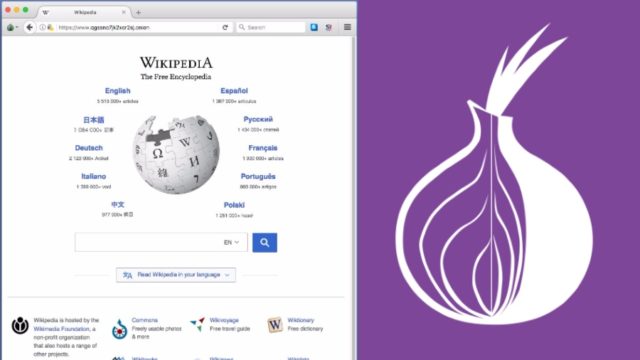
Wikipedia,
the internet’s free encyclopedia is accessible on the dark web. But, it
isn’t track-proof as the traffic has to go outside the boundaries of
the Tor network.
Now, we have an unofficial dark web version that can help netizens
use Wikipedia without someone spying on them–thanks to the ex-Facebook
engineer Alec Muffet who has worked on a personal project and is the
first to create the specially crafted onion website.
Muffett’s project will also help people who want privacy and residents in countries where the government has blocked the service.
What’s powering the project is the open-source toolkit, called Enterprise Onion Toolkit (EOTK), that Muffet has created. It can be used to create the dark web versions of websites, such as Facebook. Muffet launched it back in 2014.
When visiting the Wikipedia onion site, users may see warnings as it uses self-signed certificates. In that case, users will have to manually whitelist the addresses. Another limitation of the Wikipedia onion service is that it’s read-only. Without official support, there isn’t much that could be done as Wikipedia blocks editing over Tor to prevent trolls.
Initially, Muffet planned to run the service for about a week at his own expense but later shifted the site to a new server to keep it running for a bit longer, he said on Twitter. Meanwhile, he will expect community support to make his Wikipedia onion service permanent. He also said that he’s working to optimise and “improve EOTK to address people who are trying to attack the service.”
You can use the dark web version of Wikipedia with the onion address (requires Tor browser): www.qgssno7jk2xcr2sj.onion
Muffett’s project will also help people who want privacy and residents in countries where the government has blocked the service.
What’s powering the project is the open-source toolkit, called Enterprise Onion Toolkit (EOTK), that Muffet has created. It can be used to create the dark web versions of websites, such as Facebook. Muffet launched it back in 2014.
When visiting the Wikipedia onion site, users may see warnings as it uses self-signed certificates. In that case, users will have to manually whitelist the addresses. Another limitation of the Wikipedia onion service is that it’s read-only. Without official support, there isn’t much that could be done as Wikipedia blocks editing over Tor to prevent trolls.
Initially, Muffet planned to run the service for about a week at his own expense but later shifted the site to a new server to keep it running for a bit longer, he said on Twitter. Meanwhile, he will expect community support to make his Wikipedia onion service permanent. He also said that he’s working to optimise and “improve EOTK to address people who are trying to attack the service.”
1/ As an experiment, I've set up a Wikipedia Onion Site at: https://t.co/NhGD8w3nSU - I'll keep it running for a few days. pic.twitter.com/KMlF8k3snS— Alec Muffett (@AlecMuffett) November 23, 2017
#Wikipedians! I've blocked-off access to all pages (and docs with title) that begin with "Special:" or "User:"; what other sensitive pages might I sensibly block from the unofficial wikipedia onion? /cc @faidonl @owenblacker @jwsal https://t.co/gJVcO1lbi1 pic.twitter.com/oAUMCSlyRD— Alec Muffett (@AlecMuffett) December 2, 2017
You can use the dark web version of Wikipedia with the onion address (requires Tor browser): www.qgssno7jk2xcr2sj.onion